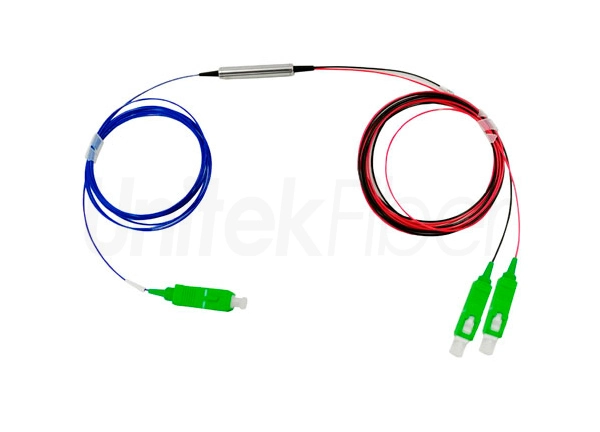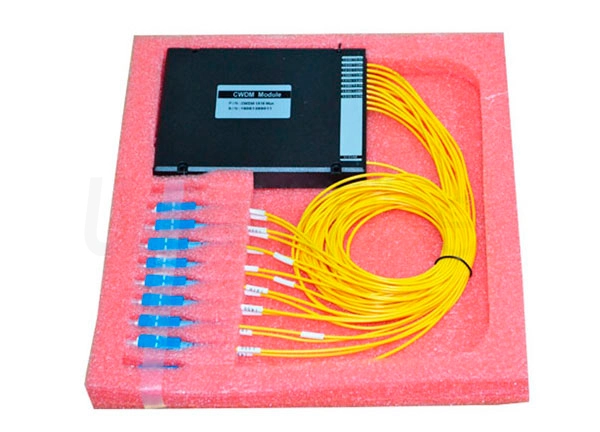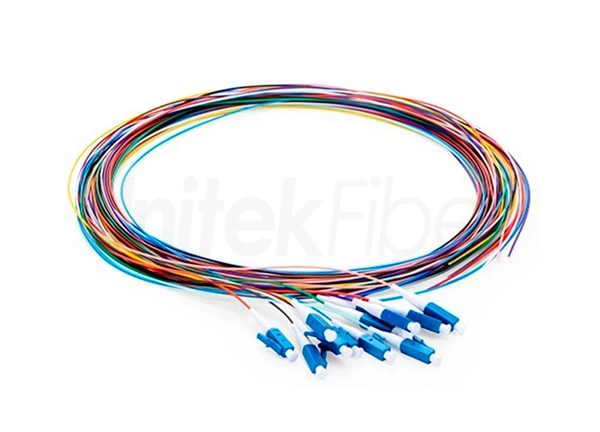
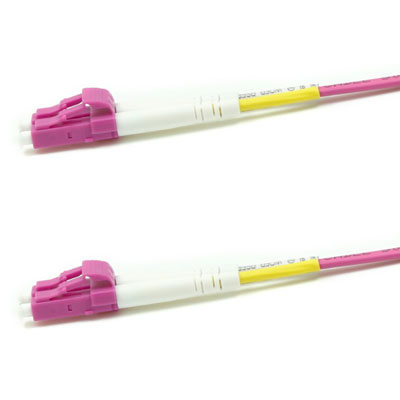
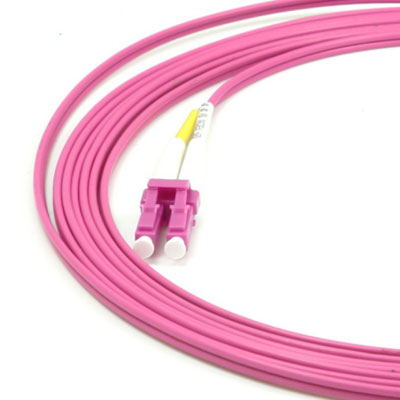
Types of multimode fiber optic jumpers:
There are multiple classification standards for multimode fiber jumpers. Multimode fiber jumpers can be divided into silicon-based fiber jumpers and plastic fiber jumpers according to different transmission media; multi-mode fiber jumpers are various in terms of connector structure.
They can be divided into: FC fiber optic jumper, SC fiber optic jumper, ST fiber optic jumper, LC fiber optic jumper, MTRJ fiber jumper, MPO fiber optic jumper, MU fiber optic jumper, SMA jumper, E2000 fiber optic jumper, D4 jumper and other forms.
Among them, multimode fiber jumpers can also be divided into LC 10 Gigabit multimode jumpers, FC 10 Gigabit multimode jumpers, SC 10 Gigabit multimode jumpers, ST 10 Gigabit multimode jumpers, etc. according to the structure of the connector.
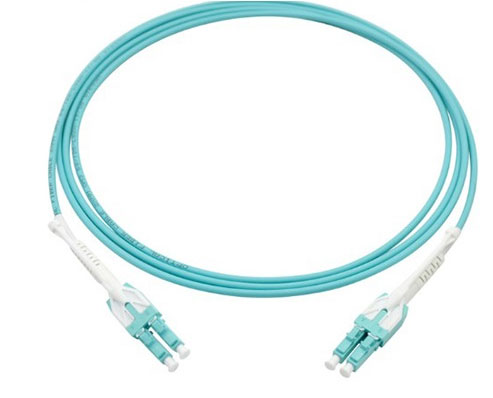
Sources of attenuation for multimode fiber patch cables
Fiber loss, also known as attenuation, is a characteristic of an optical fiber. It can be quantified to predict the total transmission power loss in an optical fiber device. The sources of these losses are generally wavelength-dependent, and vary depending on the materials used in the fiber or the bending of the fiber. Details of common sources of attenuation are as follows:
1. Multimode fiber jumper absorption
The light in the optical fiber is guided by the solid material, therefore, the light propagating in the optical fiber will be lost due to absorption. The optical fiber is made of fused silica and is optimized to propagate in the wavelength range of 1300 nm-1550 nm. Contaminants in multimode fiber jumpers can also cause absorption losses. One type of pollutant is water molecules trapped in glass fibers. Multimode fiber jumpers can absorb light at wavelengths of 1300 nm and 2.94 m. Since multimode fiber jumper communication signals and certain lasers also work in this area, any water molecules in the fiber will significantly attenuate the signal.
2. Multimode fiber jumper scattering
For most fiber applications, multimode fiber jumper light scattering is also a source of loss, usually when the light encounters a change in the refractive index of the medium. These changes may be external changes caused by impurities, particles or bubbles; or internal changes caused by fluctuations in glass density, composition or phase state.
Scattering has a negative correlation with the wavelength of light. Therefore, when the wavelengths in the ultraviolet or blue region of the multimode fiber jumper spectrum are shorter, the scattering loss of the multimode fiber jumper will be larger. Using proper fiber cleaning, handling, and storage procedures can reduce impurities at the fiber tip as much as possible, and avoid large scattering losses from multimode fiber patch cables.
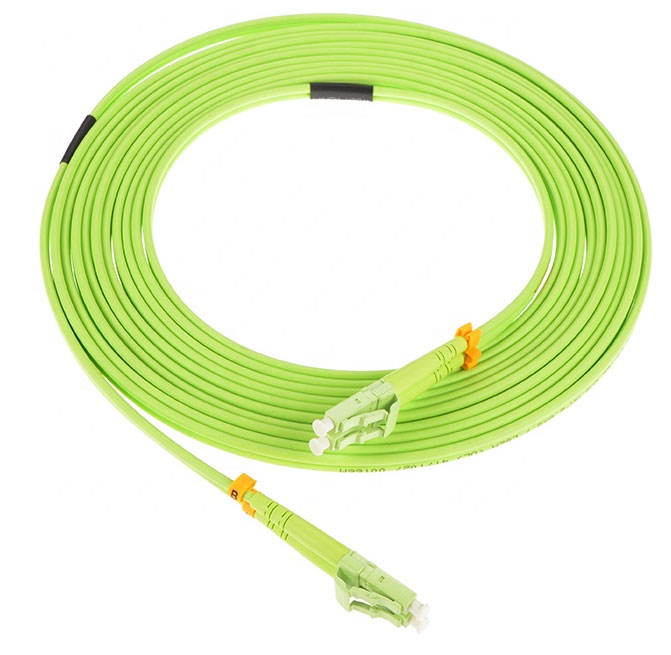
3. Bending loss of multimode fiber jumper
The loss due to changes in the external and internal geometry of the fiber is called bending loss. There are two general categories: macrobending loss and microbending loss.
The macrobending loss of a multimode fiber jumper is generally related to the physical bending of the fiber; for example, the multimode fiber jumper is rolled into a circle. When the radius of the bent multimode fiber jumper is large, the loss associated with the bent multimode fiber jumper will be relatively small; but when the bending multimode fiber jumper radius is less than the recommended bending radius of the fiber, the bending loss of the multimode fiber jumper will be very Big.
Microbending loss is caused by changes in the internal geometry of the fiber, especially the core and cladding of the multimode fiber jumper. These random changes (ie bumps) in the fiber structure of the multimode fiber patch cord will destroy the conditions required for total internal reflection, allowing the propagating light to couple into the non-propagating mode, causing leakage.
4. Multimode fiber jumper cladding mode
Although most of the light in the multimode fiber is guided by the TIR in the core, because TIR occurs at the interface between the cladding and the coating / protection layer, the light guided in the core and cladding of the multimode fiber jumper Higher order modes may also exist. This produces the cladding mode that we are familiar with. Because the cladding modes of multimode fiber jumpers are generally higher-order modes, they are a source of loss when the fiber is bent and microbend defects occur. The cladding mode disappears when two optical fibers are connected by a splice because they cannot be easily coupled between optical fibers.
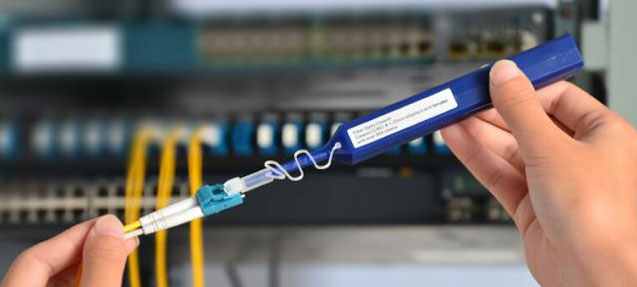
Application of multimode fiber jumper:
Multimode fiber jumper is a jumper made of enhanced 50 / 125um fiber, which can ensure reliable 10 Gigabit data communication and meet the relevant indicators of IEEE 802.3. This fiber optic jumper is a high-performance, optimized jumper with a maximum insertion loss of 0.5dB and a typical insertion loss of 0.2dB. The multimode fiber jumper meets the LSZH low smoke and halogen free requirements. Multimode fiber jumpers are designed for high-density fiber applications, such as trunk installation, horizontal area wiring, high-density cross-connect, disaster recovery, and industrial data control.
Commonly used in Gigabit Ethernet (gigabit Ethernet) optical switch inter-frame connection, CATV (cable TV), active device / transceiver interface, telecommunications network, multimedia, industrial and military aspects.
Multimode fiber patch cord (Optical Fiber Patch Cord / Patch Cable / Patch Lead / Jumper), also known as optical fiber connector, is to install connector plugs at both ends of the optical cable to achieve active connection of the optical path. Fiber optic jumpers are similar to coaxial cables, except that there is no mesh shield. The center of the fiber jumper is the glass core for light propagation. In multimode fiber patch cord multimode fiber, the diameter of the core is 50μm ~ 65μm, which is roughly equivalent to the thickness of human hair. The diameter of single-mode fiber core is 8μm ~ 10μm. The core is surrounded by a glass envelope with a relatively low refractive index to keep the fiber in the core. On the outside is a thin layer of plastic jacket to protect the envelope.
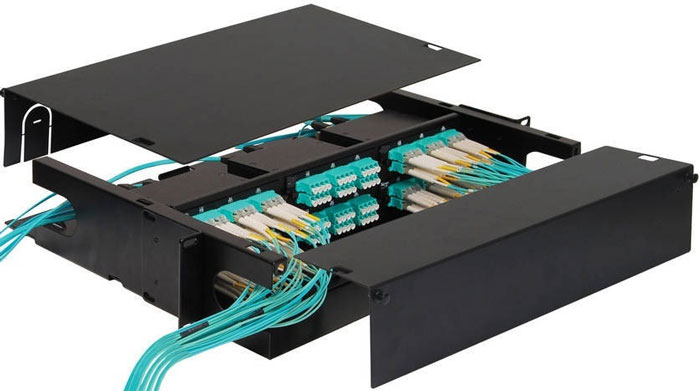
Fiber optic jumper products are widely used in communication equipment rooms, fiber-to-the-home, local area networks, fiber optic sensors, multimode fiber jumper fiber optic communication systems, fiber optic connection transmission equipment, defense readiness, etc. Suitable for cable television network, telecommunication network, computer optical fiber network and optical test equipment. Next, let's talk about the gigabit fiber jumpers and multimode fiber jumpers that are common in practical applications.
People often think that multimode fiber jumpers only play a secondary role. However, in fact. In a high-quality network wiring system. Multimode fiber jumpers are precisely one of the factors that can most affect network performance. A fiber jumper with poor transmission performance will cause a sharp drop in system performance. Perhaps during the initial installation process, the use of low-quality multimode fiber patch cords can reduce the cost of the entire network cabling system. But doing so will jeopardize the quality and reliability of the network. And ultimately make users pay more in the use of the entire system.
Gigabit fiber jumpers are Gigabit transmission rate, multimode fiber jumpers are 10 Gigabit transmission rate, just like 100M network cable and Gigabit network cable. Multimode fiber jumpers and gigabit fiber jumpers are in the same broadband, and the transmission distance of 10 Gigabit is farther, and at the same distance, the bandwidth supported by 10 Gigabit is also greater.
In order to meet the needs of Ethernet applications, there are many types of multimode fiber jumpers. According to different environmental requirements, different jackets (PVC, flame retardant OFNP, low smoke and halogen free LSZH) can be used. Different network requirements can be matched with different types of fiber end faces (APC, UPC, PC end faces have basically withdrawn from the market). Therefore, when describing a multimode fiber jumper, you need to describe its transmission type (single-mode, multimode), the types of connectors at both ends (ST, SC, LC, FC, MTRJ, etc.), and the end structure type (APC, UPC ), Number of cores (single core, multi-core), length (1m, 2m, etc.), flame retardancy of multimode fiber jumper jacket (PVC, OFNP, LSZH), and the light source also includes two support LED light source and laser light source Kinds of types.
At the same time, the UnitekFiber multimode fiber patch cord supports a variety of low-cost and high-performance fiber patch cord types, and can provide a full set of product customization (OEM) services. Such as fiber connector, length, color, fiber grade, specifications, materials, packaging, etc.
If you neen more information or support on fiber optical products, please don't hesitate to contact us sales@unitekfiber.com, we will try our best to support you.

